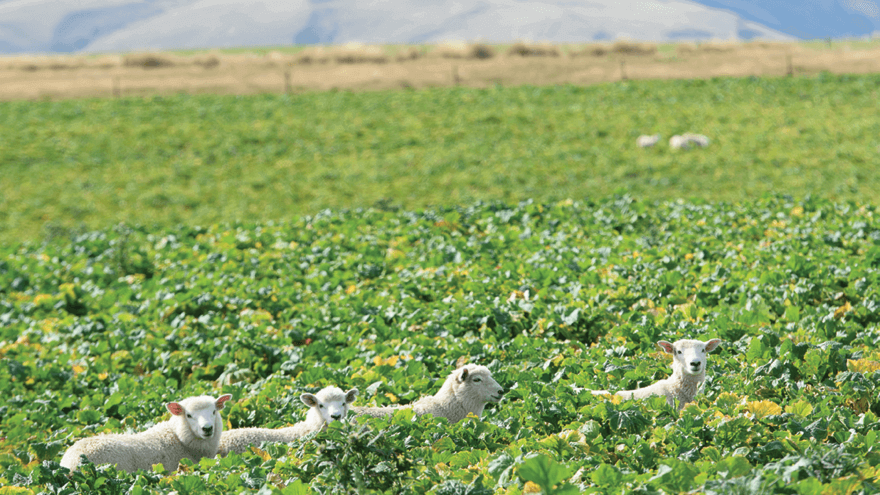
Optimising young lamb growth rates
Weaning dates and strategies in lambs are varied on farms throughout New Zealand. Some farmers will skim draft prime lambs and then wean the rest at a later date, while others have a set weaning date. Feed availability has a significant influence on the date.
To optimise lamb growth rates and avoid a weaning check, lambs should be weaned before the ewe and lamb compete for high quality feed as this can result in ‘shelly’ or framey lambs. This is due to insufficient energy and protein intake to achieve good growth rates in the lamb while with mum, back fat cover is reduced. The primary driver of this is competition of pasture intake from the ewe and limited milk intake.
This season, for many dryland areas, feed quantity is tight. Ewe milk production will be compromised especially rearing multiples. Young lambs, as a consequence, have been forced to consume a higher proportion of pasture in their diet from a younger age. These animals simply cannot compete with the aggressive feeding behaviour of ewes whose milk quantity has plummeted resulting in lower lamb growth rates.
Weaning early can be a key strategy to manage limited feed reserves. Lambs as young as six weeks old with greater than 17 kg liveweight can be successfully weaned and achieve good post-weaning liveweight gain as long as quality feed is offered.
The weaned ewe can have restricted feed intakes back to maintenance levels post-weaning as long as body condition score (BCS) 3 or better. This will help save valuable feed reserves and build a feed wedge for ewe flocks throughout summer and into autumn pre-mating period.
Short green pasture is generally high quality. Once seed heads form then fibre content increases and quality drops. Weaning early requires top quality pasture, preferably legume dominant, to achieve optimal liveweight gain. In many dryland scenarios brassica crops are used to fill this gap post-weaning.
All weaned lambs should be placed, ideally, on a preventative 28 day drench programme using a triple combination drench. This is to manage and minimise parasite burdens in the lamb, but most importantly to reduce pasture contamination and future worm larval numbers as the summer/autumn progresses. Effective drenches are the key to success in these programmes. Do a 10 day post drench check to ensure the drench you are planning to use this summer is fully effective.
When striving for high liveweight gain post-weaning in lambs, pasture and crop quality is key. As growth rates increase so does clostridial disease risk, especially pulpy kidney. Ensure that lambs grazing these high-quality feeds have had a full clostridial 5-in-1 vaccine programme, both a sensitiser dose and a booster four to six weeks later. Animals are not fully protected for up to 10 to 14 days after the second dose of vaccine.
Ensure yard conditions have minimal dust and stock are moved in a low stress way. Viral pneumonia is a significant issue in lambs and a key reason for poor liveweight gain throughout summer and autumn. The key risk period for damage to the airways and subsequent infection is strongly linked to yarding in dusty, hot conditions and moving stock too quickly whereby mouth breathing occurs. Install sprinklers in yards and ensure stock movement/yarding occurs in the cool of morning or evening and done slowly, as this can help reduce incidence of this debilitating disease.
To summarise, if you feel your lambs are not growing at a rate you’d like while on the ewes, then consider weaning earlier than normal. To be successful, sufficient high-quality feed is required. If this is not available then selling some of the lambs as stores at weaning, or where possible dipping to a lower carcass weight on those lambs that are prime, may be a consideration as a predicted dry summer looms.
To discuss your lamb and ewe’s health going into summer, contact your local PGG Wrightson Technical Field Representative.



